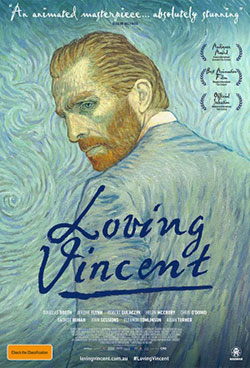‘Loving Vincent’ is unique in many ways

Kul Bhushan writes about the extraordinary experience of watching this new movie which is presented entirely as an animated painting.
When the showing of the movie Loving Vincent ended, the audience started clapping. Such was the impact of this unique movie, and especially its production, that the rapturous applause at the House Full in New Delhi was very much a spontaneous response, even though neither producers nor actors were present.
It is unique as it is the world’s first fully painted animation feature film. Moreover, it is in the painting style of its subject, Vincent van Gogh. His distinctive and powerful brush strokes capture every second of its action.
In 1965, the life of this artist was presented in a movie, Lust for Life, directed by Irving Stone and starring Kirk Douglas and Anthony Quinn. Winner of many Oscars, that movie was a shattering and humbling experience. I have never forgotten it.
Now I will never forget Living Vincent because of the animation, the same strokes as van Gogh’s, the same brilliant colours and the same perspective on the world around him.
The storyboard for the movie was based on artworks by van Gogh, then modified for the screen. These ranged from simple alterations to re-imaginings, incorporating different weather effects or time of day.
In total 65,000 frames were hand-painted by 125 artists as oil paintings, although the process of transferring them to film proved difficult, with only 1,000 frames surviving the process. No less than 5,000 artists had applied for this project, while only 125 were selected. Many others became very interested in this venture after watching an online ‘recruitment teaser’.
The story is tight, with twists and turns of a detective’s tale, as the protagonist solves the mystery of the artist’s death.
Drawn from meticulous research and inspired by van Gogh’s masterpieces, subjects, and 800 personal letters, Loving Vincent captures the world of van Gogh in a cinematic experience like no other.
This is a landmark movie. Do not miss it.
The film is written and directed by Dorota Kobiela and Hugh Welchman in a joint Anglo-Polish project.
Here a short video that shows the work behind the scenes:
Review by Kul Bhushan
- Log in to post comments
- 19 views
